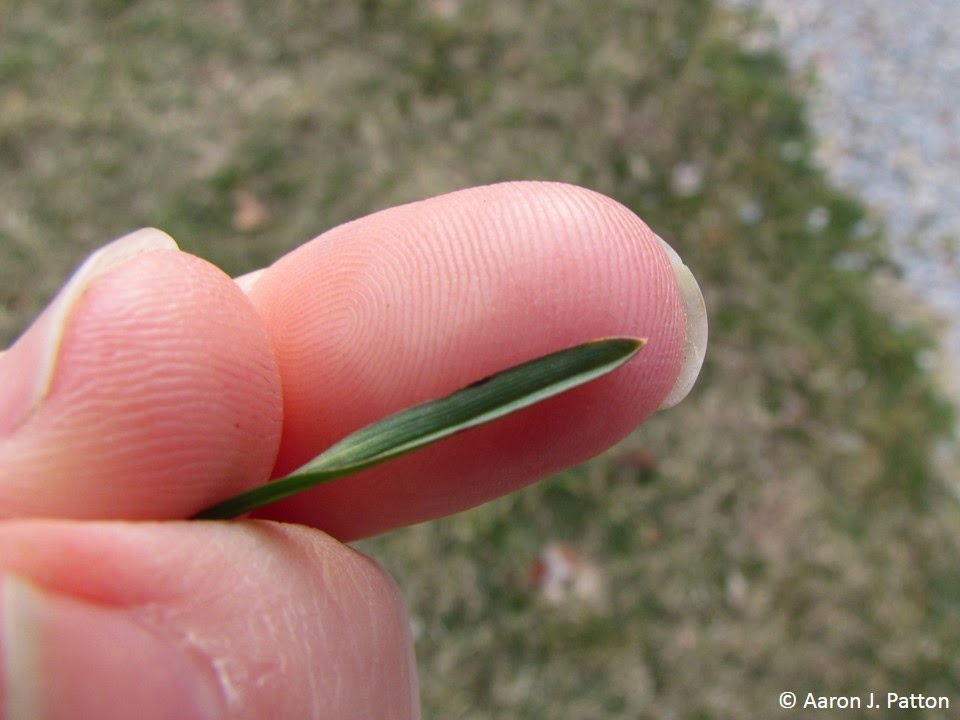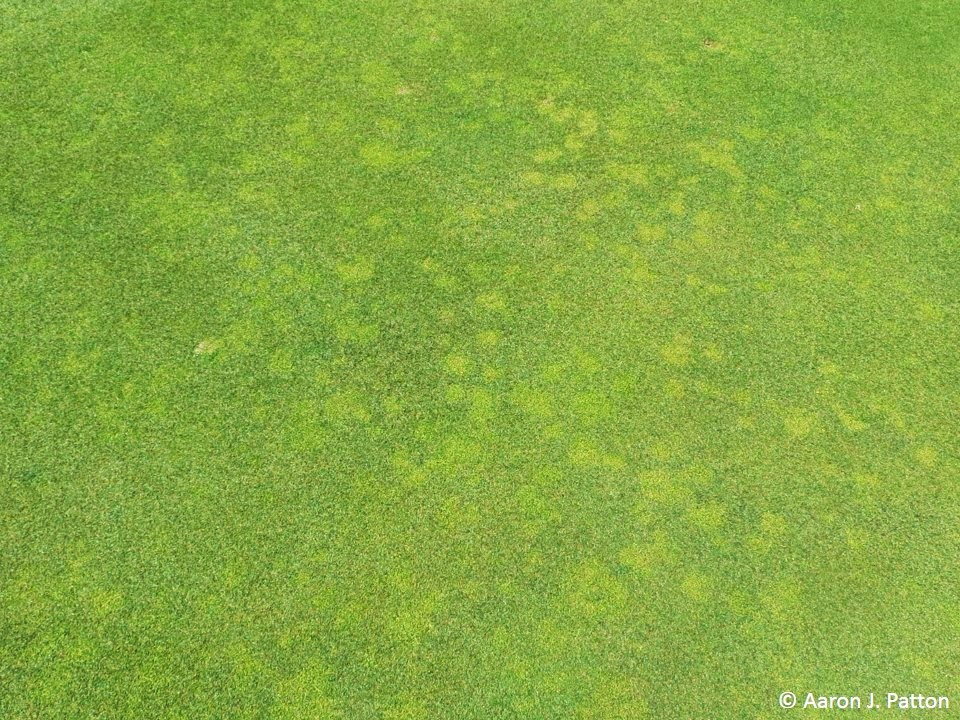Annual Bluegrass
Biology: Annual bluegrass, commonly referred to by its scientific name Poa annua (sometimes pronounced Po anna on TV), is a winter annual grass that is a difficult-to-control weed in turf. Seeds germinate in late summer, early autumn, and spring. Annual bluegrass is found throughout the United States, particularly in highly compacted, excessively wet soils. Despite having a bunch-type/clumping growth habit (some biotypes have short stolons), it can withstand extremely close mowing heights; thus, allowing the weed to successfully establish in home lawns and other high maintenance turf, such as golf courses or sports fields.
Identification: Annual bluegrass is an upright, clump-forming grassy weed that expands through the development of aggressive tillers. It is generally identifiable by its light green leaf blades that are smooth on both surfaces, have two distinct, clear lines on each side of the midrib, and a boat-shaped leaf tip. Annual bluegrass also has a slightly pointed, membranous ligule. One of the factors that makes annual bluegrass so difficult to control is its ability to produce a large amount of seedheads, even at putting green mowing heights. These seedheads can be observed as a greenish to white, open, pyramid-shaped panicle. A single annual bluegrass plant is capable of producing up to 360 viable seed that have the ability to lie dormant in the soil for many years before finally germinating.
 |
| Annual bluegrass is a prolific seed producer |
 |
| Annual bluegrass membranous ligule |
 |
| Boat-shaped leaf tip |
 |
| Annual bluegrass seedhead |
 |
| Prolific seedhead production |
 |
| Bunch-type growth habit |
 |
| Light-green annual bluegrass color in a cool-season lawn. Notice it is growing in a trafficked, compacted area. |
 |
| Light green color and prolific seedhead production at low mowing heights |
 |
| Annual bluegrass invading a creeping bentgrass putting green. |
 |
| Annual bluegrass produces seedheads even at putting green heights |
 |
| Light green color and prolific seedhead production in a golf course putting green |
Cultural control: The use of cultural practices to increase the competitive growth and development of the desired turf over annual bluegrass is one of the limited options for cultural control. However, annual bluegrass’ ability to tolerate extremely low mowing heights and prolific production of viable seed severely limits a professional turf manager’s ability to control the weed using cultural methods.
Biological control: No consistently effective biological control for annual bluegrass although previous research has examined some options.
Chemical control: There are options for controlling bluegrass through the use of herbicides; however, those options are generally specific to the species of the desired turf and the use of the area which is being treated (i.e. home lawns, golf course, sports turf, etc.). One could literally write a book on how to control this species.
To keep annual bluegrass out of your home lawn.
- Do not over-water yours lawns as annual bluegrass likes moist areas.
- Do not compact your soil through traffic where possible and aerify your lawn to reduce soil compaction as annual bluegrass grows well in thin, compacted areas.
- Maintain dense turf through fertilization, overseeding, and weed control (crabgrass and broadleaf weeds).
- Mow your lawn at higher heights of cut (>2.5 inches) as annual bluegrass is less competitive at a higher cutting height.
Homeowners should also read, ID and Control of Annual Bluegrass and Rough Bluegrass in Lawns (AY-41-W)
Aaron Patton, Turfgrass Extension Specialist
Leslie Beck, Postdoctoral Research Associate
